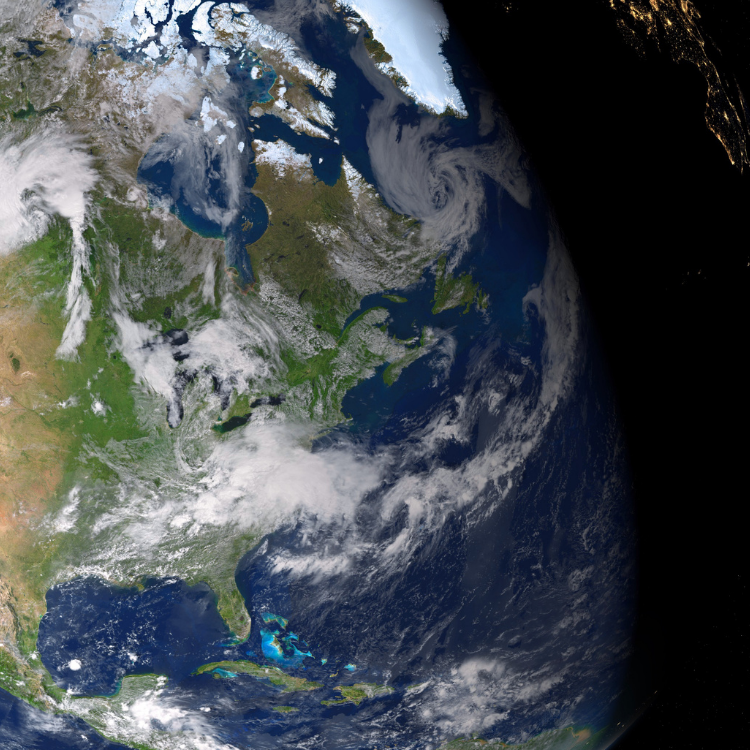

Read our latest Research Summaries
As you may already know, we publish a series of Research Summaries on the Royal Meteorological Society's website, looking at a selection of recent articles from our journals and translating them into more accessible language. These summaries help make the often complex research more available and easier to understand for a broader audience.
In the last six months, we have added nine more great reads to the collection. You can discover the latest thinking on a range of topics: lightning forecasts, bioclimatology thermal stress, hailstorms and even read about how climate change might be affecting our beer!
We are grateful to the authors for giving us an exclusive overview and highlights of their full article found within the journals' portfolio. Click on the titles below to read the individual research summaries.
Using machine learning to predict fire-ignition occurrences from lightning forecasts
Ruth Coughlan, Francesca Di Giuseppe, Claudia Vitolo, Christopher Barnard, Philippe Lopez, Matthias Drusch
Human activity is the leading cause of wildfires. However, lightning can also contribute significantly. Lightning ignited fires are unpredictable. Identifying the relationship between lightning and its causes for ignition is useful for fire control and prevention services, as they currently assess this danger mainly based on forecasts of local lightning activity.
A 41‐year bioclimatology of thermal stress in Europe
Bogdan Antonescu, Luminiţa Mărmureanu, Jeni Vasilescu, Cristina Marin, Simona Andrei, Mihai Boldeanu, Dragoş Ene, Alexandru Ţilea
The results obtained in this study gives detailed information for decision-makers about the changes in the thermal stress for different European regions and cities. These results could serve as a starting point for the development of mitigation strategies for the current impact of thermal stress in Europe.
Marc J. Alessi and Arthur T. DeGaetano
Accurate weather forecasts in agricultural regions are critical for crop production. In this study, the authors look for a forecasting method that best predicts future weather for these agricultural regions. With better forecasts come better predictions of budding onset, when to harvest, frost avoidance, and disease and insect spread, which all increase the value of the agricultural economy.
Nikolaos Mastrantonas, Pedro Herrera‐Lormendez, Linus Magnusson, Florian Pappenberger, Jörg Matschullat
Extreme Precipitation Events are associated with devastating consequences for our societies, economies, and environment. Locations in the Mediterranean are also affected by such events. Their magnitude, frequency, and associated damages have been increasing, with even more worrying future projections, as the Mediterranean is considered a "hot spot" of climate change. It is particularly important to understand natural hazards and their drivers so that we can mitigate their impacts and increase the resilience of our societies.
Understanding mechanisms for trends in Sahelian squall lines: Roles of thermodynamics and shear
Megan E. Bickle, John H. Marsham, Andrew N. Ross, David P. Rowell, Douglas J. Parker, Christopher M. Taylor
Climate change is expected to increase extreme rainfall, but how much remains uncertain. A warmer atmosphere can hold more water vapour, allowing heavier rainfall, while extreme storms may also be enhanced in complex and uncertain ways. This is particularly true for the West African Sahel, a semi-arid region just south of the Sahara, where the West African monsoon brings the annual rainfall, on which millions depend, but where severe storms threaten lives and livelihoods.
Luca Nisi, Alessandro Hering, Urs Germann, Katharina Schroeer, Hélène Barras, Michael Kunz, Olivia Martius
Hail, a low probability high impact weather event, has been a subject of scientific interest for many decades because of the severe damage it causes to agriculture, buildings and cars. Due to its strong local-scale variability (in time and space) and the chaotic nature of thunderstorms, forecasting hailstorms still poses a major challenge to weather services. To learn more about these storms, we must analyse observations from the past. This is challenging due to the lack of historical observations and databases that are either incomplete or limited to a few case studies.
Cameron C. Lee, Omon Obarein, Scott C. Sheridan, Erik T. Smith, Ryan Adams
When people talk about the topic of ‘Climate Change’ usually the first thing that comes to mind is ‘Global Warming’. While an increase in the average global temperature is a great – and simple – indicator of how our climate is changing, an average temperature has relatively little impact on society compared to changes in extreme temperatures. This research investigates how extreme temperature events and extreme humidity events in North America have changed over the last several decades.
Vulnerability of hop-yields due to compound drought and heat events over European key-hop regions
Potopová Vera, Lhotka Ondřej, Možný Martin, Musiolková Mariea
Policy assistance may be necessary for the adaptation of the EU hop-growing industry to changing climatic conditions. Even with the modest warming so far experienced, yields have stagnated, and quality has declined. This fact means further expenses for premium beer production, which also has aromatic hops.
Mahmoud Osman, Benjamin Zaitchik, Hamada Badr, Sultan Hameed
Temperature variability in eastern North America and Europe is often associated with the North Atlantic Oscillation (NAO) phenomenon. In this study, the authors have examined each of the NAO composing centers separately, in terms of their influence on the air temperature in both winter and summer in eastern North America and Europe on sub-monthly (10 days) to seasonal timescales.

